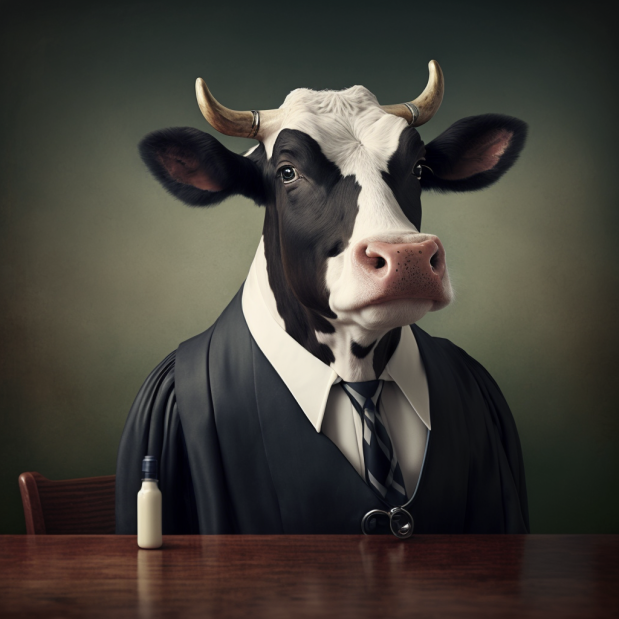Liability for cow-related zoonotic diseases involves several legal and public health considerations, particularly around who is responsible when a disease transmitted from cows to humans causes harm. The potential legal liability typically depends on the relationship between the parties involved, the nature of the disease transmission, and the standards of care expected from those responsible for the cattle.

1. Understanding Zoonotic Diseases from Cows
Cows can be carriers of zoonotic diseases, which are diseases that can be transferred from animals to humans. Common examples include:
- Brucellosis: Also known as Undulant Fever, this bacterial infection can spread to humans through unpasteurized dairy products or direct contact with infected cows.
- E. coli O157:H7: This bacteria can contaminate meat or produce and cause severe illness if ingested by humans.
- Bovine Tuberculosis (TB): An infection caused by Mycobacterium bovis, which can spread through inhalation or ingestion of contaminated food.
2. Sources of Liability
The legal responsibility for cow-related zoonotic diseases can fall on different parties, depending on the situation:
Farm Owners and Ranchers
Farmers and ranchers have a duty of care to ensure their cattle do not pose an unreasonable risk of disease transmission to others. This includes maintaining good hygiene, proper animal health monitoring, and complying with health and safety regulations.
If a cow-related zoonotic disease outbreak occurs and is linked to negligent practices (such as poor sanitation, failure to vaccinate, or improper handling of sick animals), the farm owner may be held liable for any resulting harm. Negligence claims require proving that the farm breached its duty of care, causing harm to humans.
Processors and Food Handlers
When a zoonotic disease spreads through food products, the processors, distributors, and sellers of those products may be liable under product liability laws if the contamination occurred during production, processing, or handling. For example, if dairy or meat from an infected cow is not handled properly, resulting in a human contracting a disease, the entities involved in the production chain could face legal action.
Employers of Agricultural Workers
Agricultural employers have a duty to provide safe working conditions for their employees. If an employee contracts a zoonotic disease from working with cattle and the employer failed to provide appropriate protective measures (like gloves, training, or vaccinations), the employer could face liability under workplace safety laws such as the Occupational Safety and Health Act (OSHA).
Strict Liability for Cattle Trespass
Under common law cattle trespass doctrine, livestock owners are strictly liable when their animals trespass onto another’s property and cause damage—regardless of the owner’s knowledge or negligence. In Theyer v. Purnell (1918), a defendant’s sheep infected with scab trespassed onto the plaintiff’s land and transmitted disease to the plaintiff’s sheep. The court held the defendant strictly liable for cattle trespass and its natural consequences, irrespective of his knowledge of the infected condition. This strict liability standard means owners cannot defend by claiming they were unaware of disease or took reasonable precautions.
A landmark case demonstrates the financial stakes involved
In Minnesota, a jury awarded $7.55 million to a child’s family after she contracted E. coli and Hemolytic Uremic Syndrome from contact with cattle at Dehn’s Pumpkin Farm. The child required dialysis and is expected to need multiple kidney transplants during her lifetime. The farm was found negligent for failing to minimize dangers of animal contact. Such verdicts highlight that negligence claims for zoonotic disease transmission can result in multi-million dollar judgments when permanent injury occurs.
3. Legal Defenses and Challenges
A common defense in cases involving zoonotic disease liability is that the injured party assumed the risk of disease exposure. For example, workers on a cattle farm may be expected to understand the inherent risks of working with animals.
If the person who contracted the disease was partially responsible for their own exposure (e.g., by failing to follow safety protocols), this can reduce or eliminate liability for the farm or business owner.
4. Regulatory Compliance and Disease Control
Compliance with federal, state, and local health regulations is critical in mitigating liability. In the United States, laws such as the Food Safety Modernization Act (FSMA) establish standards for preventing contamination of food products.
Implementing biosecurity measures (such as controlling farm access, quarantining sick animals, and ensuring proper manure management) can prevent disease spread and serve as evidence of due diligence in the event of a liability claim.
5. Liability Insurance
Farmers and businesses involved with cattle should consider liability insurance policies that cover zoonotic disease risks. Such policies can protect against financial losses related to legal claims and settlements arising from disease outbreaks.
Liability for cow-related zoonotic diseases is complex and depends on multiple factors, including the cause of the outbreak, adherence to safety standards, and the parties involved. To mitigate risk, stakeholders in the cattle industry must adhere to best practices in animal husbandry, biosecurity, and food safety, and ensure they are compliant with all relevant regulations.